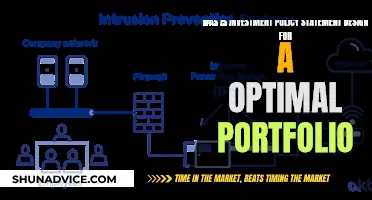
Saving for a house can feel like a daunting task, but with a clear plan and the right tools, you can make it a reality. Here are some steps to help you get started on your journey towards homeownership:
1. Understand your financial situation: Assess your income, expenses, debt, and credit score. This will help you determine how much house you can afford and how much you need to save for a down payment. Remember to consider other costs such as closing costs, moving expenses, and potential repairs.
2. Set clear savings goals: Decide on the amount you want to save for the down payment and create a timeline, such as saving a certain percentage of the purchase price over the next five years.
3. Create a budget: Evaluate your spending and cut back on unnecessary expenses. Look for ways to increase your income, such as through side hustles or asking for a raise.
4. Choose the right savings or investment accounts: Consider using high-yield savings accounts, money market accounts, or certificates of deposit (CDs) to grow your savings. These options offer higher interest rates than traditional savings accounts and are suitable for short-term savings goals. Avoid riskier investments like the stock market, especially if you plan to buy a house within the next few years.
5. Automate your savings: Make saving easier by setting up automatic transfers from your checking account to your savings account. You can also ask your employer to split your paycheck and directly deposit a portion into your savings account.
6. Explore assistance programs: Look into first-time homebuyer assistance programs, which can provide grants, low-interest loans, or help with closing costs.
7. Improve your credit score: A higher credit score can help you qualify for better mortgage rates. Pay your bills on time, avoid taking on new credit, and maintain your oldest credit accounts to build a strong credit history.
8. Stay disciplined: Resist the temptation to dip into your other savings, such as your emergency fund or retirement accounts. Focus on your savings goal and make consistent contributions.
Remember, buying a house is a significant financial decision, and it's important to seek professional advice from a financial advisor or mortgage lender to ensure you're making the best choices for your personal situation.
| Characteristics | Values |
|---|---|
| Time horizon | 5 years |
| Investment options | High-yield savings account, money market funds, CDs, treasuries, stocks, real estate, retirement accounts (IRAs), or a combination of these options |
| Down payment | Typically ranges from 0% to 20% of the purchase price; the median down payment in 2022 was 14% |
| Mortgage options | Conventional loan, FHA loan, VA loan, USDA Rural Development Program, Fannie Mae, Freddie Mac |
| Additional costs | Closing costs, moving expenses, repairs, renovations, private mortgage insurance (if the down payment is less than 20%) |
| Credit score | A minimum score of 620 is required for conventional mortgages; FHA loans require a score above 580 for a 3.5% down payment and a score of at least 500 for a 10% down payment |
| Debt-to-Income Ratio (DTI) | Lenders generally prefer a DTI of 43% or less; aim to bring your DTI below this threshold |
What You'll Learn

Understand your home-buying goals
Understanding your home-buying goals is a crucial first step in your journey towards purchasing a house in five years. Here are some key aspects to consider:
First-time Homebuyer
Are you a first-time homebuyer? This is an essential question to ask yourself, as it will impact the resources and support available to you. First-time homebuyers often have access to specific programs, grants, or loans with more flexible requirements. Understanding your position will help you explore the right options for your needs.
Space Requirements
Do you need a large space, or are you looking for something more modest? This consideration will significantly influence the purchase price and the size of the down payment you'll need. If you're starting a family and require a larger home, your financial planning will differ from someone seeking a smaller space.
Purchase Price
Understanding your desired purchase price is pivotal in shaping your financial strategy. The price of the home will dictate the size of the down payment, the monthly mortgage payments, and the overall affordability of the property. It's essential to be realistic and align your expectations with your financial capabilities.
Down Payment
The down payment is a significant upfront cost that you'll need to plan for. While the traditional advice suggests saving 20% of the home's purchase price, this can vary. Some lenders may require as little as 3-5% down, while others might offer more flexible options. Understanding your lender's requirements and your financial capabilities will help you set a clear savings goal.
Additional Costs
Remember that there are other costs associated with buying a home beyond the down payment. Closing costs, moving expenses, repairs, renovations, and homeowners insurance are all essential factors to consider. These additional expenses can add up, so it's crucial to factor them into your financial plan.
Mortgage Options
Understanding the different mortgage options available to you is vital. Research the difference between an FHA loan and a conventional loan, for instance. FHA loans are often popular among first-time homebuyers due to their lower down payment requirements, but they may come with additional rules and costs, such as private mortgage insurance (PMI).
Timeline
Finally, your timeline to purchase a house in five years will influence your savings strategy and the types of investments you choose. Short-term savings options, such as high-yield savings accounts, money market funds, or certificates of deposit (CDs), are generally recommended for this timeframe. These options provide more stability and access to your funds when needed.
Understanding your home-buying goals is essential to creating a tailored financial plan. By considering these aspects, you can develop a clear and effective strategy to work towards purchasing your dream home.
Invest Wisely: A Guide to Savings in Australia
You may want to see also

Set a clear savings goal
Setting a clear savings goal is a crucial step in achieving your dream of homeownership. Here are some detailed instructions to help you set a realistic and well-defined savings goal:
Understand Your Home-Buying Goals:
Before setting a savings goal, it's essential to define your home-buying objectives. Are you a first-time homebuyer? Do you require a large space, or are you seeking something more modest? Understanding these factors will assist in determining the purchase price and the size of the down payment needed.
Calculate How Much House You Can Afford:
As a general rule of thumb, the total house value should not exceed three to five times your annual household income. However, this range can vary depending on factors such as your current debt situation, mortgage rates, and future earnings potential. Once you have an estimate, you can work backward to calculate the required down payment.
Set a Down Payment Percentage:
The down payment required varies depending on your lender and credit history. While a 20% down payment is commonly recommended, it is not always necessary. According to the National Association of Realtors, the median down payment in 2022 was 14%. Some lenders may accept as little as 0% to 3.5% down, depending on your financial circumstances. For instance, a Federal Housing Administration (FHA) loan may be an option for those with a credit score above 580.
Determine Your Timeline:
Consider how soon you plan to purchase a home. If you intend to buy within the next three years, it is advisable to keep your down payment funds in checking, regular savings, or high-yield savings accounts. These options provide easy access to your money when needed. On the other hand, if you have a longer timeline, you might want to explore investing a portion of your down payment funds, potentially achieving higher returns.
Calculate Your Monthly Savings Goal:
Once you know the total amount needed for the down payment and your timeline, you can set a monthly savings goal. Divide the total amount by the number of months until your planned purchase. For example, if you aim for a $430,000 home with a $86,000 down payment and plan to buy in five years, you would need to save approximately $1,433 per month, assuming no returns.
Choose the Right Savings Tools:
When setting a clear savings goal, it's essential to select the appropriate savings vehicles. For short-term goals like saving for a house within five years, experts recommend choosing low-risk options such as high-yield savings accounts, money market funds, or certificates of deposit (CDs). These options may not offer high returns, but they provide a safe place for your money and easy access when you need it.
A Safe Investment: Post Office Savings Schemes
You may want to see also

Explore high-yield savings accounts
If you're saving for a house in five years, you'll want to keep your money in a safe place where it can grow. A high-yield savings account is a great option for this.
High-yield savings accounts are savings accounts that offer higher interest rates than traditional savings accounts. They are a good option for people who want to earn a competitive yield on their savings account to boost their savings potential. They are also a good choice for those saving for a house, as they allow you to grow your down payment money until you need it.
- They offer higher interest rates than traditional savings accounts, helping your money grow faster.
- They are easily accessible, so you can withdraw your money when you need it for the down payment on your house.
- They are safe, as they are typically insured by the federal government (up to $250,000) if the bank or credit union fails.
- They usually don't have monthly service fees or minimum balance requirements.
- They often provide digital tools that allow you to manage your savings easily through your computer or mobile device.
When choosing a high-yield savings account, consider the following:
- Look for accounts with high annual percentage yields (APYs) to boost your savings.
- Avoid accounts with monthly service fees that can eat into your savings.
- Choose an account that provides easy access to your money, such as through ATM withdrawals or electronic transfers.
- Consider whether you want your checking and savings accounts at the same bank. Some banks offer both checking and high-yield savings accounts, while others are online-only and may not offer checking accounts.
- LendingClub Bank: 5.15% APY
- EverBank: 5.05% APY
- BrioDirect: 5.00% APY
- Bask Bank: 4.85% APY
- Popular Direct: 4.76% APY
- CIT Bank: 4.70% APY
- PNC Bank: 4.65% APY
- CIBC Bank USA: 4.61% APY
- UFB Direct: 4.57% APY
Keep in mind that interest rates can change, so it's important to regularly review and compare the rates offered by different banks. Additionally, some high-yield savings accounts may have minimum balance requirements or withdrawal limits, so be sure to read the terms and conditions carefully before opening an account.
Equity Linked Savings Schemes: A Smart Investment Guide
You may want to see also

Automate your savings
Automating your savings is a great way to ensure that you consistently put money away for your future home. Here are some tips to help you automate your savings effectively:
- Set up a separate savings account: Consider opening a dedicated high-yield savings account specifically for your home down payment. This will help you keep track of your progress and avoid the temptation to spend the money on other things.
- Make use of direct deposit: Most employers offer direct deposit, which allows you to split your paycheck and have it deposited into multiple accounts. You can use this feature to automatically transfer a portion of your income into your savings account each time you get paid.
- Authorise automatic transfers: Contact your bank and set up automatic transfers from your primary account to your savings account. This way, you don't have to remember to transfer the money manually, and you can avoid the temptation to spend it. Just make sure to schedule the transfers for your payday or when you know you'll have enough funds to avoid overdraft fees.
- Explore paycheck deductions: Another option is to have your employer deduct a certain amount from your paycheck each pay period and transfer it directly into your savings account. This way, you save effortlessly without even seeing the money in your primary account.
- Monitor and adjust: Regularly review your savings plan and progress. This will help you stay motivated and make any necessary adjustments to stay on track. Consider using a graphical representation of your savings progress, such as a debt thermometer or a pie chart, to visualise your milestones.
- Consider a certificate of deposit (CD): If you want to be more disciplined with your savings, you can put your money in a CD. CDs often offer higher interest rates than regular savings accounts. However, be mindful of early withdrawal penalties if you need access to your funds before the maturity date.
Maximizing Your Savings Account: A Guide to Smart Investing
You may want to see also

Cut back on expenses
Cutting back on expenses is a great way to free up money for your savings goal. Here are some detailed and direct tips to cut back on expenses when saving for a house in 5 years:
Track Your Spending Habits
The first step to cutting back is to understand your spending habits. Start by keeping a written record of everything you spend money on for at least a month, preferably two. This includes all expenses, from your rent or mortgage to that $3 soft drink. Use a notebook, spreadsheet, or a money app to track your spending. This will help you identify areas where you can cut back and prioritize spending to reach your savings goal.
Update Subscriptions
The convenience of the digital world makes it easy to accumulate subscriptions, streaming channels, and memberships. However, these expenses can add up quickly. Assess all your subscriptions and ask yourself: "How much do I use this?", "Do I really need this?", and "Can I live without this?". Be decisive and cancel any subscriptions you don't truly need. According to C+R Research, the average American spends $219 per month on subscriptions, so there is potential for significant savings in this area.
Save on Utility Costs
Reducing your utility bills can also help cut back on expenses. Here are some ways to lower your utility costs:
- Replace incandescent light bulbs with LED bulbs, which last longer and use less electricity.
- Install a programmable "Smart" thermostat to save on heating and cooling costs.
- Unplug unused electrical devices and use power strips or timers to block excess electricity.
- Lower the temperature on your water heater, as few people need it set higher than 130 degrees Fahrenheit.
- Seal energy leaks by caulking and weather-stripping doors and windows.
- Turn off lights when you leave a room.
- Repair leaky toilets and faucets, and take shorter showers to reduce water usage.
Cheaper Housing Options
If you're renting, consider moving to a less expensive area, getting a roommate, or negotiating with your landlord when it's time to renew your lease. If you own your home, ensure your mortgage is right for you and consider refinancing to get a lower interest rate. Additionally, a down payment of at least 20% can help you avoid paying for private mortgage insurance.
Consolidate Debts
Debt consolidation combines multiple debts into a single loan and a lower interest rate, helping you reduce monthly costs and pay off debts sooner. Transferring credit card balances to a single low-interest card can also be effective, but be mindful of the introductory period before interest rates increase. Another option is to work with a nonprofit credit counseling agency to create an affordable budget and reduce interest rates on your credit card debt.
Reduce Insurance Premiums
Shop around for lower insurance rates. Compare rates from different companies and consider bundling your home and car insurance, as this can often result in significant discounts. You can also raise your deductible to reduce your monthly premiums. Additionally, consider term life insurance, which has lower monthly premiums than whole life policies and can be set to end when you retire.
Maximizing UK Savings: Investment Strategies for Beginners
You may want to see also
Frequently asked questions
The amount of money you need to buy a house depends on several factors, including the price of the home, the amount of your down payment, and your mortgage rate. The down payment is often the biggest barrier first-time buyers encounter, and paying 20% of the home's purchase price will save you money on interest and help you avoid paying private mortgage insurance. However, there are no- or low-down-payment mortgage options available.
The traditional advice is to save 20% of the home's purchase price. However, this can vary based on the type of loan and lender requirements. Some lenders may require as little as 3-5% down for certain loan programs, such as FHA or VA loans. It's important to also consider other costs associated with buying a home, such as closing costs, moving expenses, and potential repairs or renovations.
Here are some tips to save money for a house:
- Evaluate your current finances and come up with a plan.
- Track your spending and cut back on unnecessary expenses.
- Increase your income by asking for raises, moving into a new role, or picking up side gigs.
- Choose a budgeting method that works for you, such as the 50/30/20 rule or zero-based budgeting.
- Set up automatic transfers to a dedicated high-yield savings account.
- Look into first-time homebuyer assistance programs, which may offer down payment grants or help with closing costs.







